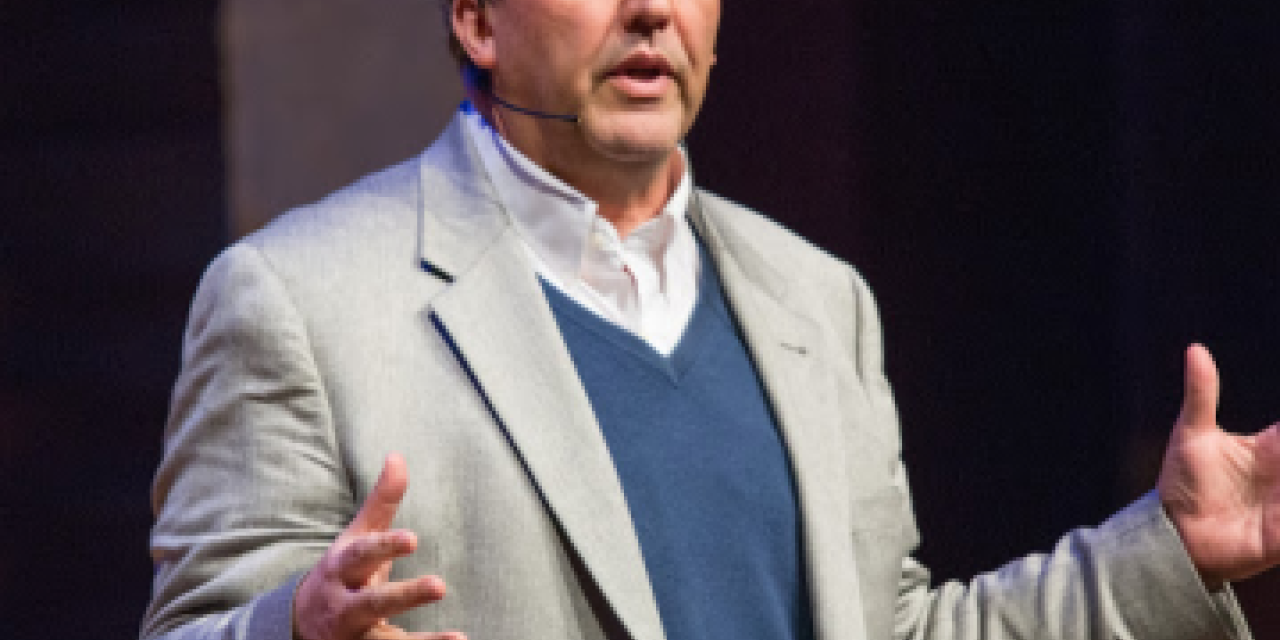L. Gregory Jones teaches theology and Christian ministry at Duke University and is senior strategist for leadership education at Duke Divinity School in Durham, North Carolina. Jones is the author, co-author or editor of 16 books, including the forthcoming Christian Social Innovation (May 2016), Forgiving as We’ve Been Forgiven: Community Practices for Making Peace (2010) and Resurrecting Excellence (2006). In this edited conversation, he talks about ‘traditioned innovation’ in worship.
When and why did you coin the term “traditioned innovation”?
I was frustrated by the wars between people who wanted to change nothing and those who wanted to change everything. I had been struck by Ron Heifetz’s image of “adaptive change.” He noted that in evolutionary biology, as much as 97 to 99 percent of an organism might stay the same, while only one to three percent of change—if it is the right change—produces transformation. So I began to reflect on how to focus on innovation that also preserves the past, and I coined the term “traditioned innovation.”
I was relying on an important distinction from church historian Jaroslav Pelikan who said, “Tradition is the living faith of the dead; traditionalism is the dead faith of the living.” And when I asked a friend, New Testament scholar Kavin Rowe, what came to mind when he heard the phrase “traditioned innovation,” his first response was “The Book of Acts.” The more we talked about it, the more he and I began to realize that it is a biblical way of thinking.
What’s a church worship example of the difference between tradition and traditionalism?
I would suggest actually describing tradition as the lively center that helps us avoid both traditionalism and ceaseless change. When we become traditionalists, we develop a default opposition to any change or newness. So we oppose new hymns and songs or perhaps the use of new instruments, and we get stuck in ruts.
On the other hand, we can become captive to the idea of ceaseless change. After one “contemporary worship” service where I preached, a woman told me that she loved the new service because it was “so fresh,” but then noted that she missed singing the “old, familiar” songs like “Lord, I Lift Your Name on High” [written in 1989].
A lively sense of tradition will look for new ways to sing familiar hymns and familiar ways to introduce new music. I experienced both at the 2016 Calvin Symposium on worship. The first was an improvisational setting of “All Creatures of our God and King” in an evening worship service. The second was in a workshop where Roman Catholic composer Rawn Harbor played the “Kyrie Eleison” to music he wrote that resonated with the African-American tradition of spirituals.
What first steps can worship committees or worship leaders take to discern what God wants them to preserve or discard?
The first step is to see whether diverse people, including visitors and new members, understand and appreciate why the congregation does what it does in its various worship activities. I know of a worship committee that met with a person who had just started visiting their congregation. They went through their typical order of worship and invited the visitor to ask questions. This person hadn’t been raised in the church, so asked questions that surprised the worship committee. The visitor wondered what “grace” meant when the pastor would say, “Grace and peace to you…” at the beginning of the service. The phrase is clearly important, but some worship committee members stumbled to explain what it means and why it matters as a greeting.
Can you share a story of a worship practice that has helped a congregation listen to God and respond creatively?
An interesting example for my wife and me personally is the discovery of lectio divina in Protestant congregations. This longstanding practice in the Christian tradition invites us to engage scripture in ever-fresh ways. When using lectio divina with a variety of Protestant congregations, we have found it works best to introduce it as a ‘practice Christians around the world have engaged for centuries’, rather than describing it specifically as a “Roman Catholic” practice. When we take this approach, Protestant congregations are very receptive and discover scripture's power and meaning in fresh ways.
How do sermons change when preachers decide that traditioned innovation is a biblical way of thinking?
I would point to two examples. First, we tend to discover the rich interplay of biblical texts throughout scripture. Many years ago, Richard Hays’ book Echoes of Scripture in the Letters of Paul helped me see this interplay in a way that has shaped my scripture reading and preaching ever since. I’m looking forward to his interpretation of the Old Testament in his forthcoming Echoes of Scripture in the Gospels (June 2016).
Second, preachers who value traditioned innovation will be more likely to see our forebears in the history of Christianity as conversation partners in our interpretation of scripture. This has been a remarkable re-discovery in recent years, and it was prompted by a landmark essay by one of my teachers, David Steinmetz, called “The Superiority of Pre-Critical Exegesis.” Seeing the history of interpretation of scripture as part of the ongoing work of teaching and preaching brings scripture alive in exciting ways that can nurture faithful Christian formation for all of us.
Learn more about traditioned innovation and how churches put it into practice. Find L. Gregory Jones’ books and essays in a library near you. Watch how a live jazz combo helped Greg Jones explain traditioned innovation in his plenary address (second screen down) at the 2016 Calvin Symposium on Worship.

